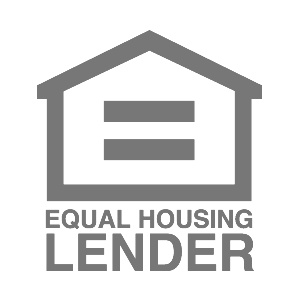
The two most common options for accessing home equity are a home equity line of credit (HELOC) and a cash-out refinance. Let’s take a look at the differences between a HELOC vs. cash-out refinance and when each might make sense for your financial situation and specific needs.
With every mortgage payment you make, you’re building equity in your home. And equity equals ownership. Once you’ve built up a significant amount of equity, you’re able to access that money and use the funds for any purpose you wish. How you access your home’s equity, however, depends on your needs.
In This Article
What Is a HELOC?
A home equity line of credit is revolving debt. Based on the value of and equity in your home, a HELOC works much like a low-interest credit card. Once approved (usually for an amount up to 90% of your home’s value minus any outstanding mortgage balances), you may draw on the line of credit and use the money however you’d like. For example, you could use your home’s equity to take a dream vacation or perform home repairs, consolidate high-interest debt or assist with retirement budgeting.
As you accumulate a balance on your line of credit, you will make repayments toward the interest and principal. The similarities with how a credit card works continue because as payments are made during the draw period, your principal balance will decrease, allowing you to borrow more money.
It’s important to note that a HELOC exists separately from your existing mortgage, and comes with its own terms and repayment schedule. For this reason, a HELOC is often referred to as a second mortgage. It’s secured by your home, meaning that if you fail to make payments, you may risk losing your home.
What Is Cash-Out Refinancing?
A cash-out refi is a new mortgage that pays off your existing mortgage, giving you your home equity as a lump sum of cash via a check or direct deposit into your bank account.
The result of a cash-out refinance is a brand new mortgage loan and likely different terms than your original mortgage. This means a different interest rate, new monthly payment amount and possibly a longer remaining loan term to pay off the new mortgage completely.
A cash-out refi could be the way to go if you need a fixed amount of cash immediately and would like to maintain one mortgage payment. A cash-out refinance may also be best if you don’t believe that you have the discipline for a revolving line of credit, which is open to subsequent borrowing.
HELOC vs. Cash-Out Refinance
When it comes to deciding between a HELOC vs. cash-out refinance, consider how and when you intend to use the equity from your home, and how long you will need to pay it back.
A HELOC is a secondary home equity loan product that is fluid in how you draw from it and how you pay it back. For example, if you don’t have a balance, there is no payment to make. This means that you will only have to pay back the portion of the HELOC you’ve used at any given moment. Typically, you’ll be able to draw from your HELOC over a 10-year period. After the draw period ends, the repayment period officially begins and you’ll no longer be able to withdraw from the HELOC. You will then have up to 20 years to repay the outstanding balance.
This is in stark contrast to a cash-out refi, which may immediately increase your monthly mortgage payment obligation for the next 10, 15 or 30 years. Let’s say your home is valued at $350,000 and your mortgage balance is $200,000. In this scenario, you have $150,000 of equity in your home, meaning you could refinance your $200,000 loan balance for $300,000, and receive the extra $100,000 in a lump sum. Your new mortgage will be for $300,000, and the interest rate and monthly mortgage payment will reflect that.
Key Features of a HELOC
- Revolving debt to borrow and repay
- Second mortgage with separate payment and interest rate
- Payments due only on what you borrow
- Variable payments during the draw period based on your line of credit balance (Payments may also vary if the HELOC has a variable rate feature including during the repayment period)
Key Features of a Cash-Out Refinance
- Receive your home equity in a lump sum
- Continue with a single, refinanced mortgage payment
- Fixed payments
- Longer terms may be available (for example, a new 30-year mortgage)
As you can see, there are several key differences between a HELOC vs cash-out refi. Before proceeding with either option you should consider your personal budget to determine what you can afford, and think about how and how often you will use the equity in your home.
See How Much Equity You Can Borrow Today
When you’re ready, use our HELOC calculator to find out how much equity you may be eligible to borrow.
Eligibility for a home equity loan or HELOC up to the maximum amount shown depends on the information provided in the home equity application. Depending on the lender, loans above $250,000 may require an in-home appraisal and title insurance. Depending on the lender, HELOC borrowers must take an initial draw of the greater of $50,000 or 50% of the total line amount at closing, except in Texas, where the minimum initial draw at closing is $60,000; subsequent HELOC draws are prohibited during the first 90 days following closing; after the first 90 days following closing, subsequent HELOC draws must be $1,000, or more, except in Texas, where the minimum subsequent draw amount is $4,000.
The amount of time it takes to get funds varies. It is measured from the time the lender receives all documents requested from the applicant and depends on the time it takes to verify information provided in the application. The time period calculation to get funds is based on the first 4 months of 2023 loan fundings, assumes the funds are wired, excludes weekends, and excludes the government-mandated disclosure waiting period.
For Texas home equity products through Prosper, funds cannot be used to pay (in part or in full) non-homestead debt at account opening.
Depending on the lender, qualified home equity applicants may borrow up to 80% – 95% of their primary home’s value and up to 80% – 90% of the value of a second home. In Texas, qualified applicants may borrow up to 80% of their home’s value. HELoan applicants may borrow up to 85% of the value of an investment property (not available for HELOCs).
Home equity products through Prosper may not be available in all states.
All home equity products are underwritten and issued by Prosper’s Lending Partners. Please see your agreement for details.
Prosper Marketplace, Inc. NMLS# 111473
Licensing & Disclosures | NMLS Consumer Access
